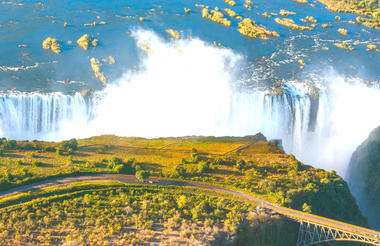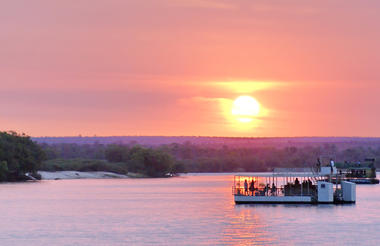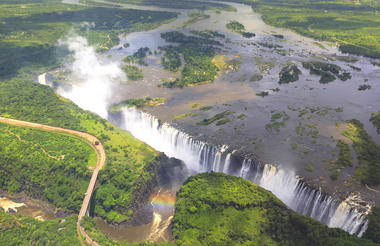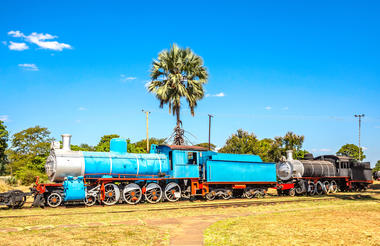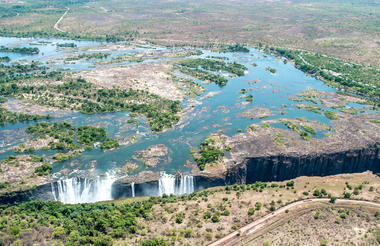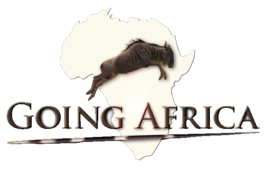Currency
The official currency in Zambia is the Zambian Kwacha. US$ Dollar notes (2007 Series onwards), and Visa and MasterCard are accepted.
Visa
Effective 1st November 2022 the Zambian Department of Immigration has waived visa requirements for Australia, Canada, China, European Union (except Switzerland), Gulf States (Bahrain, Kuwait, Iraq, Oman, Qatar, Saudi Arabia and the United Arab Emirates), Japan, South Korea, United Kingdom and United States of America.
Nationals of the above-listed countries will not require visas to enter Zambia (however, the waiver of the visa does not grant permission for entry into Zambia as the final decision rests with the immigration officer at the port of entry).
Fees for Visitors from all other countries not listed above who are eligible to receive their visa on entry are: US$ 25.00 for single entry/ US$ 40.00 for double entry/U$D 75 multiple entry /KAZA visa U$D 50 / Transit visa U$D 25 / Day Tripper U$D 10.
Some visitors need to apply for visas before arrival - please check with your Embassy. For more information on visas please visit the following address: https://www.zambiaimmigration.gov.zm/for-visitors/
ALWAYS have cash available in the correct US$ amount at all ports of entry - in the event where credit card facilities/ ATM's are not operational.
Kaza Univisa – Zimbabwe and Zambia
Travellers planning to visit both Zimbabwe and Zambia should apply for a UniVisa (also known as KAZA visa). The visa can be obtained in advance, as well as at ports of entry, but cannot be guaranteed.
The UniVisa allows travellers 30 days travel within both Zambia and Zimbabwe, and is also valid for daytrips to Botswana. Travellers must remain within Zambia & Zimbabwe for the visa to stay valid. Visiting Botswana as a daytrip will not affect the visa’s validity, provided travellers return to Zambia or Zimbabwe the same day.
Internal Flights and Transfers
On fly-in safaris, movement between the game areas is done on a scheduled basis by Proflight Zambia unless otherwise specified. Proflight uses 12, 18 and 29 seater aircraft for their flights. Transfers between camps in the same game area may be done by light aircraft, but mostly by road/game drive transfer or by boat on a shared seat basis.
Flight times around Zambia | Approximate Proflight flying times
Livingstone to Lusaka 1 hour
Lusaka to Royal or Jeki Airstrip for Lower Zambezi 35 min
Lusaka to Mfuwe Airport for South Luangwa 1 hour 10 minutes
Mfuwe Airport to Lilongwe Airport 1 hour
All flights Livingstone to Mfuwe/Lower Zambezi are all via Lusaka and vice versa!
Departure Taxes
Departure taxes are included in ticket prices.
Weight & Luggage Restrictions
The luggage allowance is 15kg per person. Excess baggage will be charged extra for. Any bag over 32kg will not be flown. Only one piece of hand luggage with a maximum weight of 5kg is allowed per person. Please note that a handbag is considered as a piece of hand luggage.
Set in Zambia, the Kafue National Park is the largest park in the country and the second-largest in Africa. The contrasting landscape of the Central Kafue features riverine bush, miombo and savannah woodlands, vast open plains and majestic granite outcrops. Visitors can enjoy the pristine natural beauty of the diverse scenery and its natural, unspoilt beauty. Drive along the Spinal Road for a chance to discover the most remote parts of the Central Kafue National Park. Don't miss the opportunity to spot a wide range of African wildlife with regular sightings of puku, impala and bushbuck and catch a glimpse of the countless bird species that call this area home.
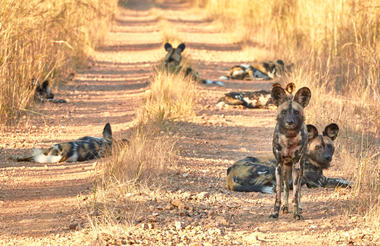
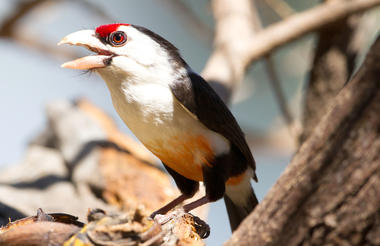
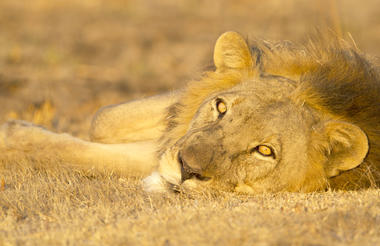
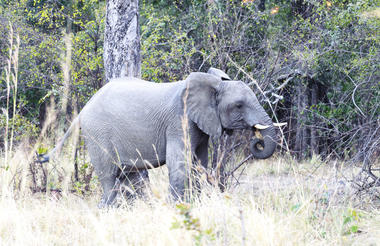
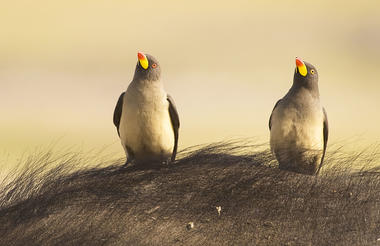
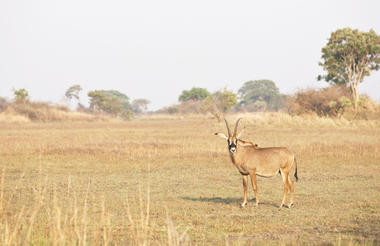
South Luangwa is often named as one of Africa’s best national park combining fantastic wildlife experiences and top quality guiding. South Luangwa is all about exploring the bush on foot. The famous walking safaris originated here and it is possibly Africa’s finest walking destination.
Exploring the bush on foot is an especially interesting tranquil way to discover the small hidden treasures of this wildlife haven.
The Luangwa River with its distinctive ox-bow lagoons is said to have one of the most intense concentration of hippos and crocodiles in Africa. At night you will silently fall asleep with their snorts and grunts.
South Luangwa National park is home to over 60 mammal species and 400 birds. It has three endemic species, the beautiful Thornicroft giraffe with a more striking coloration than giraffes in the rests of Southern Africa, Cookson’s wildebeest that is slightly more reddish and the Crawshay’s Zebra, a subspecies of the plains Zebra, lacking the shadow stripes between the black stripes.
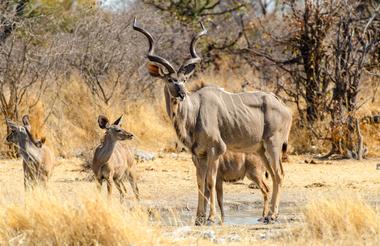
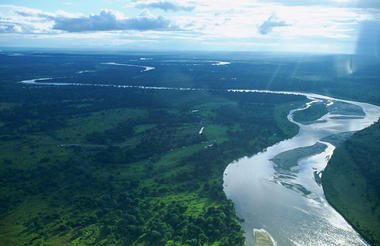
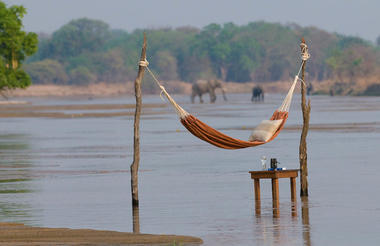

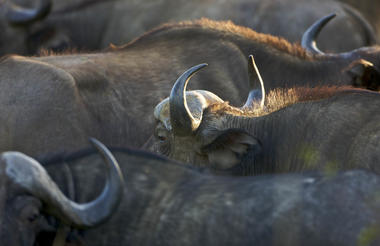
At 4750 square kilometres, Lower Zambezi National Park is a comparatively new addition to the crown of attractions available in Zambia. What a jewel it is at the heart of a very important conservation area which also includes Mana Pools National Park across the river in Zimbabwe and several substantial game management areas. Flying in low over the Escarpment is just start of your adventure into this amazing corner of the world.
The scenery in Lower Zambezi is magnificent, centred on the mighty Zambezi River, whose meandering waters are responsible for depositing the unusually rich soils that line the river, creating broad grassy floodplains and impressive stands of open mahogany and ebony forests. Your first Glimpse of this valley will leave you in awe of this majestic river and its surroundings.
The ever constant and reassuring Zambezi Escarpment rises a short distance from the river creates a majestic backdrop for this hidden world and forms a natural barrier for the wildlife of the Lower Zambezi National park
The area contains excellent densities of wildlife, notably elephants, lions, leopards, spotted hyenas, hippos and crocodiles. There are also good chances for interaction with wild-dogs.
From a safari perspective, the most outstanding aspect of this area is the very wide range of activities on offer, including vehicle safari, night vehicle safari, walking safari, motorboat safari and canoe safari. Viewing elephants, hippos, crocodiles and other animals from the water is a particular highlight.
The national park itself is home a handful of exceptionally good safari camps, whilst the Game Management Area to the west contains a much larger number of lodges offering lower rates than the camps inside the National Park.
The area is also greatly advantaged by the fact that most of the camps here are privately owned and operated. It is one of those places where you actually get to meet the people involved, benefit from their experience and share their passion.
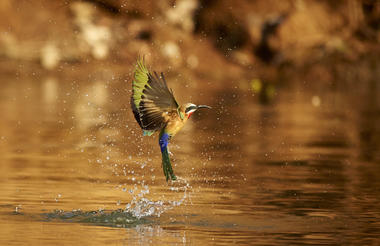
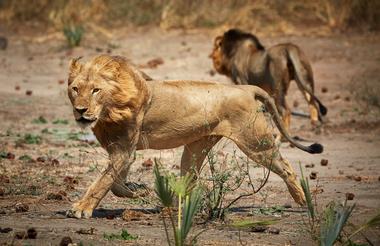
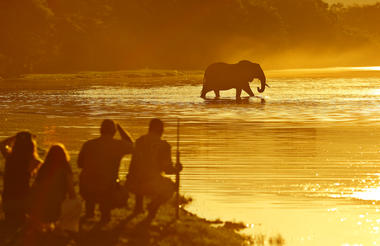

Livingstone is a historic colonial town most famous for its proximity to the Victoria Falls. The town has experienced a revival in the last decade with the old colonial style buildings which line the shaded main avenue, being renovated and now housing shops, cafes and a variety of local businesses. Livingstone offers a wide range of activities from the challenge of white water rafting and bungy jumping, to the awe-inspiring elephant back safaris and sunset cruises. Livingstone has something for everyone.
The Victoria Falls are one of the Seven Wonders of the World and is the largest sheet of falling water on earth - a spellbinding and mesmerising spectacle. The sheer mass of water cascading down the 100m drop across nearly 2km makes a thunderous roar and creates a magnificent spray of water that can be seen for miles - hence the local name 'mosi oa tunya' meaning 'the smoke that thunders'. Water flow over the Falls varies throughout the year. The river's annual flood season is February to May when the spray can reach a height of over 400m, this is spectacular from above but it makes it very difficult to see the Falls at ground level as it is under a heavy shower/mist. Water levels start dropping in August and are at their lowest October - December when much of the rocky face becomes dry. At times of low water, the falls are best viewed from the Zimbabwe side or from Livingstone Island.
